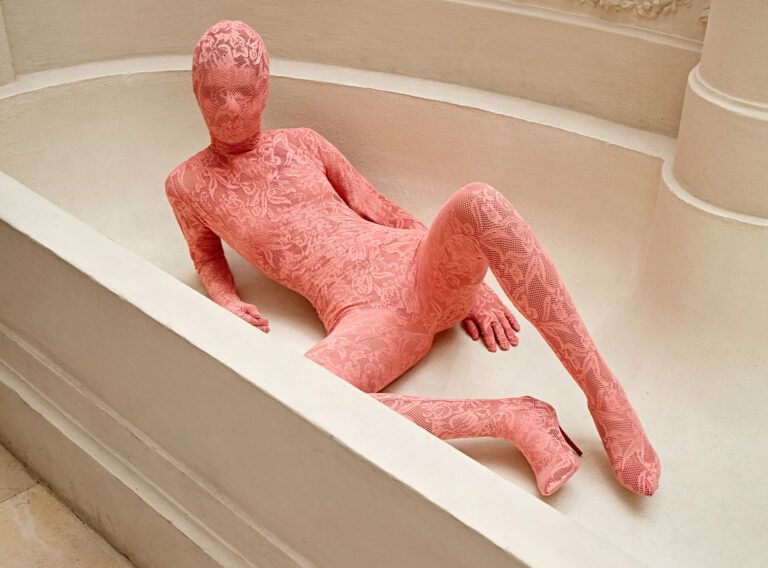Your beautiful collection caught our attention at WRN. How do you feel after the presentation of your collection here in Prague?
Originally my graduation collection at ArtEZ was filmed as a classic fashion show and presented in a cinema. The video was beautiful and great for my portfolio, but unfortunately it didn’t feel like a fashion event. WRN Prague came at the perfect time and was a great experience overall. I got to see my collection at a live show, on a new set of models, location and next to so many talented designers from all over the world.
How did your family influence and support your plans to become a fashion designer?
My parents have always been my biggest supporters and were there for me when I needed them financially and mentally. In fashion, it is so easy to get lost in the immense amount of work and responsibilities we put on ourselves, which can sometimes make you forget about yourself both mentally and physically. Every time I felt the need to take a step back and put myself first, my parents understood and supported my decision which made my whole fashion school experience manageable.


At which stage of the creative process do you feel the most freedom?
My collections have always been inspired by some historical period and a group of archival garments. Therefore collecting visual research and connecting it to my fashion history and tailoring knowledge is the most exciting part for me. In the last couple of years, I really got into researching archival garments, finding interesting details, their functions and translating them into my own designs.





Can you describe your graduation collection?
A black and white collection that expresses my identity through the combination of traditional folklore details, strong silhouettes through tailoring and textile design. In the form of powerful, almost uniform-like garments.
Does your collection carry a specific message?
To show that also a girl from a small country can follow her dreams.
What specific techniques or materials did you use in your collection?
Every look had its own personalized textile. Some were sourced from fabric stores, others were handmade. Going through ethnographic museums, I noticed four textile groups. Crochet, embroidery, knit and stone pleats.
Stone pleating is a craft done by hand with a stone and water. I approached one of the last stone pleading professionals in Croatia, who stone pleated cotton fabric for two of my looks.
Since crochet and hand knitting are still household skills back home, I approached two ladies that sell hand-knitted socks on the street back home in Serbia. I created the crochet and knit pattern and they created a beautiful slip crochet dress and woollen knitted sweater in two weeks, approaching it almost like a hobby.


What was the source of inspiration for your graduation collection?
I wanted to represent my roots and a small part of Balkan history by creating a collection that would include local Balkan craftspeople that still practice traditional techniques, and to show these can be used in fashion today. My main source of inspiration was from ethnographic museums in Beograd, Zagreb and Ljubljana, through which I sourced craft professionals. Studying fashion, I observed that in European fashion history and present times the history of Balkan areas is underrepresented. As a designer I want to showcase the craftsmanship of my roots alongside my love for tailoring.
I like to focus on traditional craftsmanship and intricate techniques that cannot be mass-produced, as a way to involve my community. These handmade garments were originally made to last a lifetime, which is something I want to implement and use as a message against fast fashion. These techniques tend to be very labour intensive which gives the garments a certain rarity in contrast to fast fashion





A big part of your collection focused on proper tailoring. Do you have a team behind you, or do you create it yourself?
Tailoring has always been like a puzzle for me that gives me joy and satisfaction. I would come up with a design through a historical reference and start the puzzle. Picking out a basic pattern and continuing to modify it to my desired silhouette. The next step was to select fabrics, some of which were custom made for me and some were sourced online. The whole process of creating this collection was done by me, from sewing to pattern making, model scouting, all the way to finding the right socks for the show, as well as a couple of collaborations for the shoes, knits, metal bell bags and more. I also ran into some elements that I was less confident about, like music, photography, graphic and product design. All of this was very exciting and fun to explore and just shows how broad fashion can be.









